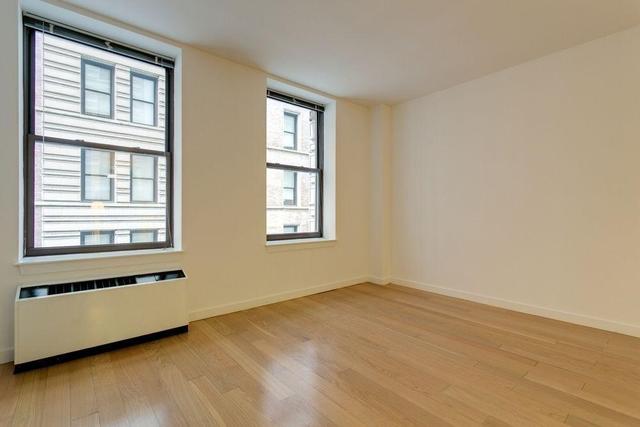
Subletting vs Subleasing: What is The Difference
By: ROS Team
Subletting and subleasing are two common practices in the world of real estate and rental agreements. However, many people often confuse these terms or use them interchangeably without realizing that they have distinct differences.
Understanding the dissimilarities between subletting and subleasing is crucial for both tenants and landlords to ensure they make informed decisions and protect their rights.
In this blog post, we will delve into the disparities between subletting and subleasing, exploring their definitions, key features, and the pros and cons of each.
Sublet Meaning & Key Features
Subletting refers to the process of a tenant renting out all or a portion of their leased property to another individual, known as the subtenant.
In this arrangement, the original tenant remains the primary leaseholder with the landlord but temporarily transfers some or all of the rights and responsibilities to the subtenant for a specific period of time.

Key Features Of Subletting Include:
- Temporary Transfer of Lease Agreement: Subletting involves the temporary transfer of the lease agreement from the original tenant to the subtenant. The subtenant assumes the rights and obligations specified in the sublease agreement, while the original tenant retains ultimate responsibility for the leased property.
- Original Tenant Retains Primary Responsibility: Despite subletting, the original tenant remains legally responsible for the leased property and obligations outlined in the original lease agreement. This includes paying rent, maintaining the property, and adhering to any rules and regulations.
- Subtenant’s Relationship with the Landlord: In a subletting arrangement, the subtenant typically does not have a direct relationship with the landlord. Instead, the original tenant acts as an intermediary, handling communication and interactions with the landlord on behalf of the subtenant.
Why Subletting?
Common reasons for subletting include temporary relocation, extended travel plans, financial difficulties, or situations where the original tenant needs to temporarily vacate the premises but intends to return before the lease term ends.
Sublease Meaning & Key Features
Subleasing refers to the process of a tenant transferring their entire lease agreement to another individual, known as the sublessee.
Unlike subletting, where the original tenant retains some level of responsibility. Subleasing involves a complete transfer of the lease agreement for the entire duration of the lease term.

Key Features Of Subleasing Include:
- Transfer of Lease Agreement for the Entire Duration: In a subleasing arrangement, the original tenant transfers their lease agreement to the sublessee for the remaining duration of the lease term. This means that the sublessee assumes all rights, responsibilities, and obligations outlined in the original lease agreement.
- Original Tenant Relinquishes Primary Responsibility: Unlike subletting, where the original tenant retains some level of responsibility. Subleasing allows the original tenant to completely relinquish their primary responsibilities as a tenant. The sublessee becomes directly responsible for paying rent, maintaining the property, and complying with the terms of the lease.
- Sublessee’s Direct Relationship with the Master Landlord: In a subleasing arrangement, the sublessee establishes a direct relationship with the master landlord. They communicate and interact with the landlord as the primary tenant, while the original tenant no longer holds a direct contractual relationship with the landlord during the sublease period.
Why Subleasing?
Common scenarios where subleasing occurs include situations where the original tenant needs to relocate permanently, wishes to have someone else take over the lease, or wants to sublet the property for a longer period without the intention of returning.
Sublet vs Sublease – The Key Differences
While subletting and subleasing are both arrangements involving the renting out of a property, there are several key differences that distinguish these two concepts.

1. Transfer of Lease Agreement
- Subletting: In subletting, the original tenant temporarily transfers a portion or the entire lease agreement to a subtenant for a specific period of time.
- Subleasing: In subleasing, the original tenant transfers the entire lease agreement to a sublessee for the remaining duration of the lease term.
2. Responsibility and Liability
- Subletting: The original tenant retains primary responsibility for the leased property and obligations outlined in the original lease agreement. They remain legally liable to the landlord.
- Subleasing: The sublessee assumes all rights, responsibilities, and obligations specified in the original lease agreement. The original tenant relinquishes primary responsibility and liability.
3. Relationship with the Landlord
- Subletting: The subtenant does not typically have a direct relationship with the landlord. Communication and interactions with the landlord are handled by the original tenant.
- Subleasing: The sublessee establishes a direct relationship with the master landlord, assuming the role of the primary tenant.
4. Approval Requirements
- Subletting: Depending on the terms of the original lease agreement and local regulations, the original tenant may require the landlord’s consent to sublet the property.
- Subleasing: Subleasing often requires explicit approval from the master landlord. The sublessee may need to undergo a screening process and meet specific criteria.
5. Duration
- Subletting: Subletting is typically a temporary arrangement, allowing the original tenant to reclaim the property after the agreed-upon sublease period.
- Subleasing: Subleasing involves the transfer of the lease agreement for the remaining duration of the lease term, with no intention of the original tenant returning.
Pros & Cons
Both subletting and subleasing have their advantages and disadvantages. Let’s explore the pros and cons of each arrangement:

A. Pros of Subletting
Flexibility for the Original Tenant: Subletting provides flexibility for the original tenant, who may need to temporarily vacate the property due to personal or professional reasons. It allows them to retain their lease while having someone else occupy and cover the rent during their absence.
Ability to Mitigate Financial Burdens: Subletting can help alleviate financial burdens for the original tenant. By subletting a portion or all of the property, they can share the rent and potentially reduce their overall expenses during the sublease period.
Opportunity for Temporary Housing Arrangements: Subletting provides an opportunity for individuals seeking temporary housing arrangements. Such as students studying abroad or individuals on short-term work assignments. It offers a more convenient and cost-effective option compared to signing a new lease for a short period.
B. Cons of Subletting
Limited Control Over the Subtenant: The original tenant has limited control over the subtenant’s actions and adherence to the lease terms. This lack of control can create potential issues if the subtenant fails to meet their obligations or causes damage to the property.
Potential Liability for the Original Tenant: Despite subletting, the original tenant remains legally responsible for the leased property. If the subtenant fails to pay rent or causes damage, the original tenant may be held liable and may face legal and financial consequences.
Risk of Violating the Lease Agreement: Subletting without obtaining proper consent from the landlord or violating any lease agreement terms can result in legal repercussions for the original tenant. It’s crucial to follow the proper procedures and seek approval to avoid potential legal disputes.
C. Pros of Subleasing
Complete Lease Transfer: Subleasing allows the original tenant to completely transfer their lease agreement to the sublessee. This relieves the original tenant of all responsibilities and obligations associated with the property during the sublease period.
Potential for Long-Term Rental Income: Subleasing can be advantageous for the original tenant who needs to permanently vacate the property but wants to continue benefiting from the lease agreement. It enables them to generate long-term rental income through the sublessee.
Reduced Liability for the Original Tenant: By transferring the lease to the sublessee, the original tenant reduces their liability as they are no longer directly responsible for the property or any lease-related obligations.
D. Cons of Subleasing
Complex Legal Procedures: Subleasing typically involves more complex legal procedures compared to subletting. The original tenant may need to obtain explicit approval from the master landlord and follow specific documentation and screening processes.
Need for Approval from the Master Landlord: Subleasing requires the approval of the master landlord. If the landlord denies the request or imposes strict criteria, finding a suitable sublessee and completing the subleasing process can become challenging.
Difficulty in Finding a Suitable Sublessee: Finding a reliable and responsible sublessee who meets the criteria set by the master landlord can be time-consuming and may pose challenges. This could delay the subleasing process and create additional stress for the original tenant.
FAQs
Is It Better To Lease Or Sublet?
The decision between leasing or subletting depends on individual circumstances and preferences.
Leasing is generally more straightforward and provides stability as the original tenant maintains full control and responsibility for the property throughout the lease term.
Subletting offers flexibility for temporary absences or financial relief but comes with risks such as limited control over subtenants and potential liability.
Ultimately, it is important to carefully consider the pros and cons of each option and choose the one that aligns best with your specific needs and situation.
Can You Sublease An Apartment In NYC?
Yes, subleasing an apartment in NYC is possible, but it typically requires obtaining the landlord’s consent and following the specific rules and regulations outlined in the lease agreement and local laws.
Do Subletters Have Rights In NYC?
Yes, subletters in NYC have certain rights. The specific rights can vary depending on factors such as the terms of the sublease agreement and local laws.
However, subletters generally have the right to occupy the leased premises and enjoy the same protections against eviction as the original tenant.
What’s The Difference Between Sublessor And Sublessee?
The sublessor is the original tenant who transfers their lease agreement to another individual, known as the sublessee.
The sublessor remains responsible for the property and obligations outlined in the original lease, while the sublessee assumes those responsibilities during the sublease period.
In short, the sublessor is the tenant who subleases the property, and the sublessee is the individual who rents the property from the sublessor.
Subletting vs Subleasing – Final Words
Understanding the difference between subletting and subleasing is crucial for tenants and landlords alike. While subletting offers flexibility and temporary relief, subleasing involves a complete transfer of the lease.
Each option has its own advantages and disadvantages, making it essential to carefully consider individual circumstances and legal requirements.
So, next time you contemplate renting out your property or searching for a temporary home. Remember the distinction between subletting and subleasing to make the right choice for your specific needs.
Related Article:
What is NYC Sublet Law
Pros and Cons of Subletting
Subletting Your NYC Apartment








